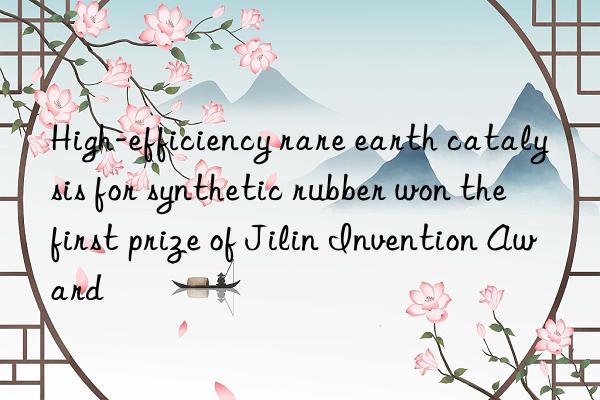
The Changchun Institute of Applied Chemistry, Chinese Academy of Sciences recently won the first prize of the 2014 Jilin Provincial Technology Invention Award for its series of achievements in the research and development and industrial application of new high-efficiency rare earth catalytic systems for synthetic rubber.
The highly active rare earth catalytic system invented by this achievement is applied to the industrial plant of 10,000-ton rare earth isoprene rubber. The cost of the catalyst per ton of isoprene rubber product is reduced to less than 400 yuan, and the polymerization time is shortened from an average of 7 hours to 2.5 hours. The quality has reached the best level at home and abroad, and for the first time in all-steel radial truck tires, the 100% replacement of natural rubber by rare earth isoprene rubber has been realized; it is applied to the 10,000-ton rare earth butadiene rubber industrial plant, and the butadiene rubber per ton The cost of the main catalyst of the product is reduced to less than 300 yuan, which greatly reduces the production cost and improves the production efficiency. The product quality has reached the same level at home and abroad. The industrialization of rare earth isoprene rubber that replaces natural rubber and rare earth butadiene rubber that meets the requirements of safe, energy-saving and green tires can be greatly accelerated.
According to reports, in the 1960s, the Changchun Institute of Applied Chemistry first carried out research on rare earth-catalyzed synthetic rubber. However, a series of problems such as low polymerization activity, poor controllability of synthetic rubber chain structure, microstructure, relative molecular weight and its distribution have not been well resolved in the world so far.
The scientific and technical personnel of Changchun Institute of Applied Chemistry started from the characteristics of rare earth elements and the basic theory of rare earth catalyzed synthetic rubber, solved the problems of high association of rare earth catalysts, and proposed a new microstructure formation mechanism of coordination polymerization synthetic rubber, invented Coordinated reversible chain transfer polymerization method. He has made original and systematic research results in the aspects of high activity, high stereospecificity and controllability of relative molecular mass and distribution of rare earth catalytic systems.
The project team developed a rare earth catalytic system with high activity, high cis orientation and high homogeneity stability. For the first time, it was proposed that the high degree of association of rare earth compounds is the primary factor for the low polymerization activity and wide molecular mass distribution of rare earth catalysts, and through the specific structure of ligands, the association molecular clusters of rare earth catalysts can be converted into single-molecule catalysts, and a highly active, The "homogeneous" rare earth catalyst with high cis-orientation and high homogeneity stability improves the utilization rate of rare earth, and the microstructure, relative molecular weight and distribution of the polymer are controllable.
They also proposed the theory and method of coordination reversible chain transfer polymerization synthetic rubber, which changed the chain transfer reaction in traditional coordination polymerization synthetic rubber from irreversible to reversible, avoided the termination reaction caused by chain transfer, and improved the rare earth The utilization of elements makes the polymerization reaction from uncontrollable to controllable, and makes the preparation of synthetic rubber with narrow molecular mass distribution and its chain end functionalization a reality.
Applying the new rare earth catalytic system and coordination chain transfer polymerization technology, combined with the core key technologies such as the high-efficiency polymerization process, coagulation and post-treatment technology, and processing technology designed by the project team, the main catalyst consumption of 10,000 tons of isoprene rubber It is only 0.18 kg/ton of product. In the 10,000-ton-level butadiene polymerization process, the main catalyst consumption even reaches 0.056 kg/ton of product, which is much higher than the highest international level, which greatly reduces production costs and improves production efficiency.



 微信扫一扫打赏
微信扫一扫打赏
